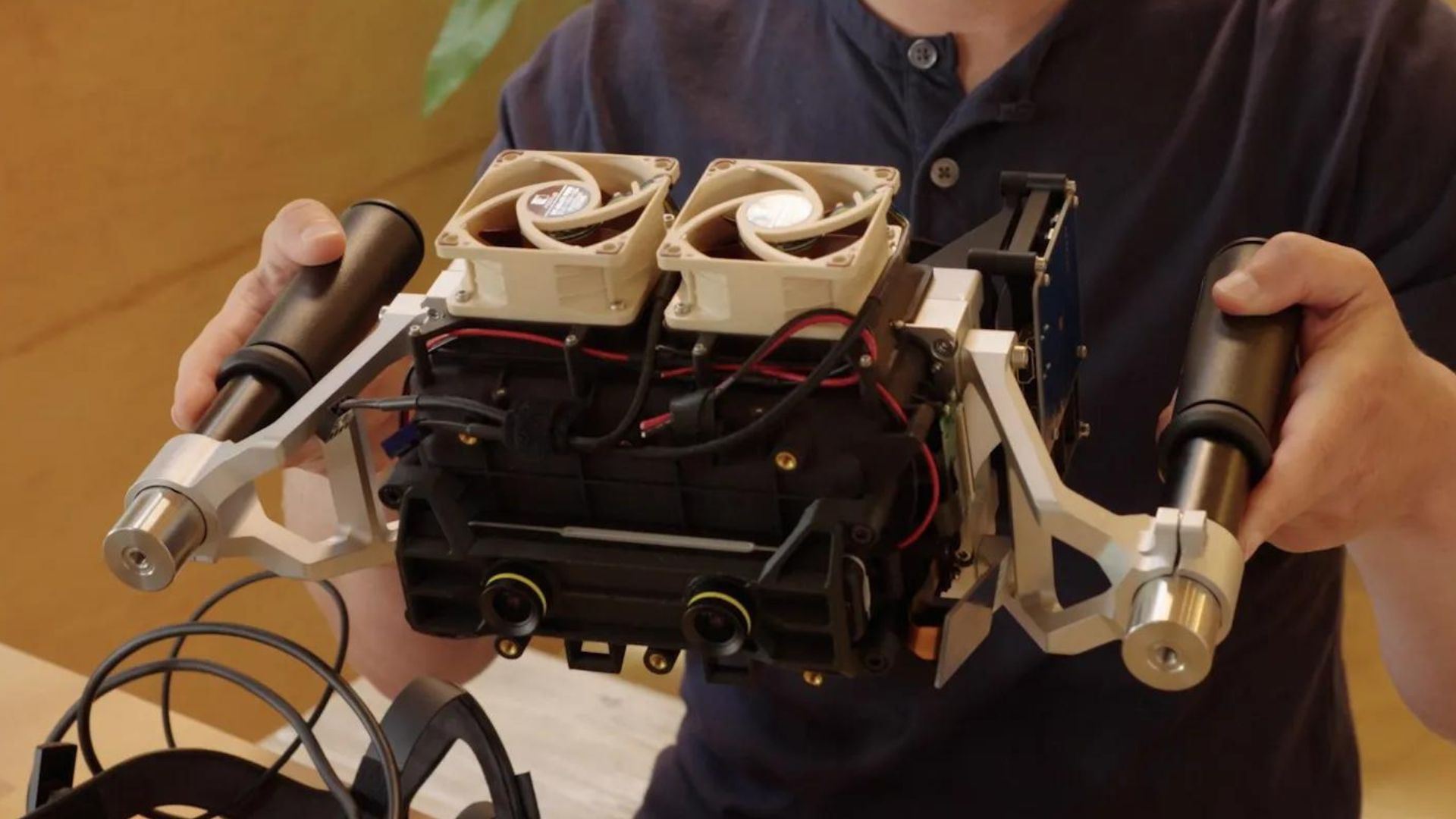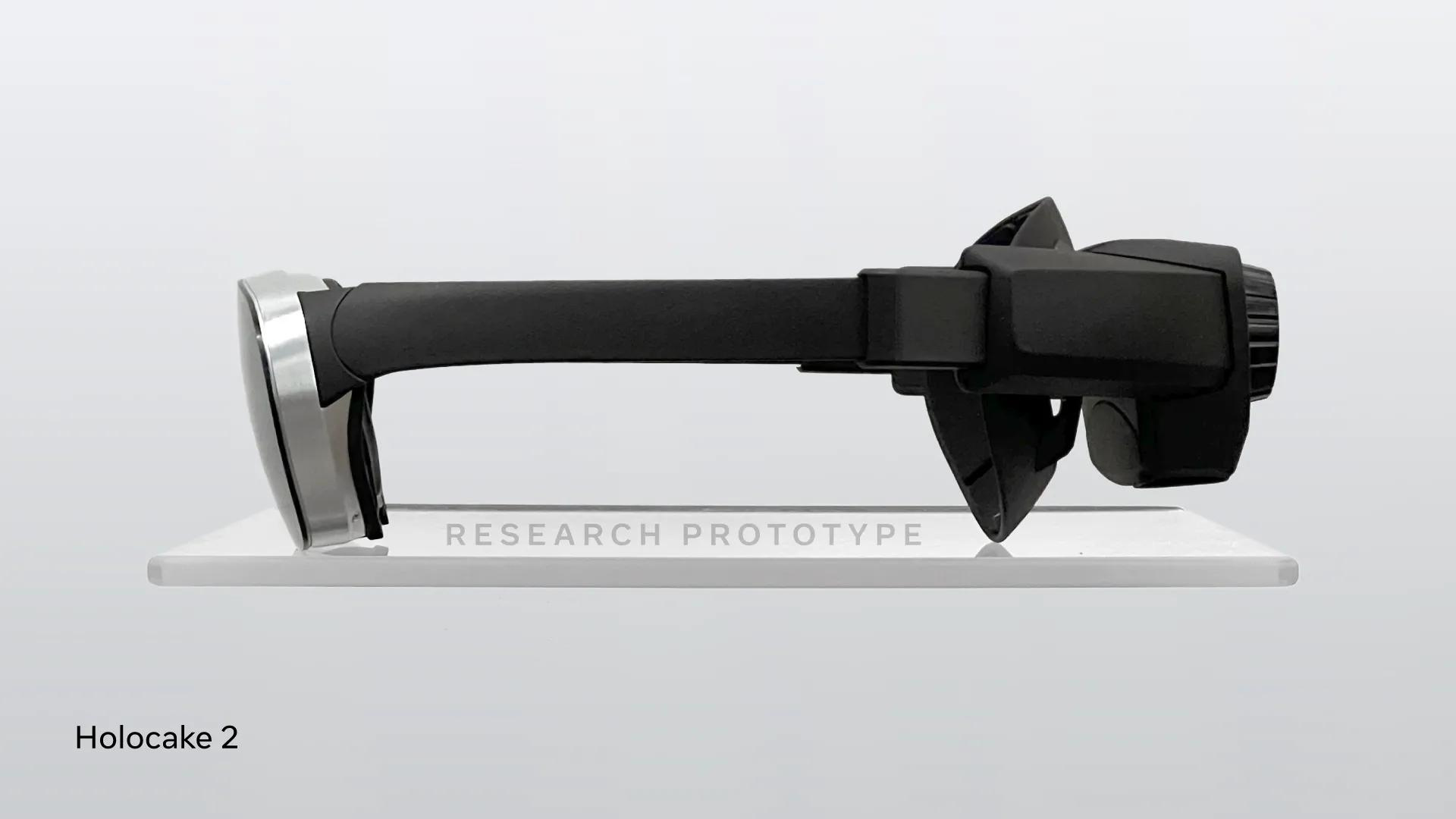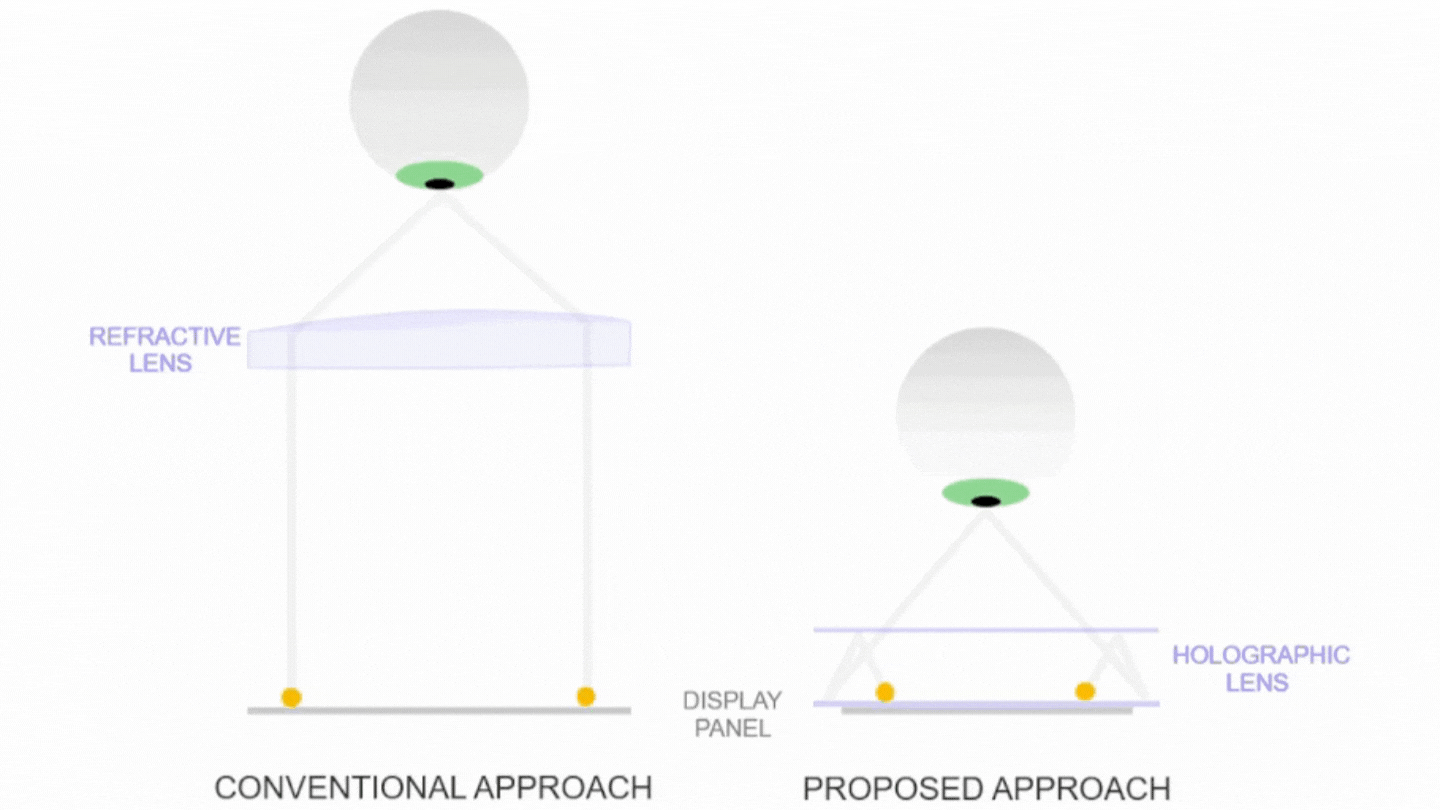These are the VR headsets Meta doesn’t want you to use
Forget the Quest 3 or Project Cambria, we want to try Starburst

Meta has been working on over a dozen VR headset prototypes, but it doesn’t want you to use any of them. Ever. That’s because these bulky “time machines” as it calls them aren’t aimed at consumers but are proofs of concept for its internal designers only.
During a virtual round table last week, Meta CEO Mark Zuckerberg and members of Meta’s Reality Labs division demonstrated several of these prototypes. Many of them have their internal circuits exposed, and some even look like you’re strapping the entire contents of a desktop PC to your face – complete with extra-large cooling fans and side handles to hold so your neck doesn’t snap under the weight.
That latter one with the handles is a prototype called Starburst. Why so bulky? Starburst contains a display that can achieve a brightness up to 20,000 nits so as to improve its HDR capabilities massively over the Quest 2. A great TV can achieve a few thousand at most and the Quest 2 can only achieve around 100 nits.
High dynamic range (HDR) is the tech used by displays to help bright colors pop out from your screen while keeping dark objects in the same image well defined. Without HDR, your picture can look washed out; like the contrast has been turned down too far.

HDR is apparently the tech that is most commonly linked to improved realism in VR. Unfortunately, Starburst is wholly impractical as an actual VR headset for regular folk to use. But as with all of the other prototypes, Zuckerberg explained that the goal is for these headsets to “help us identify which technical paths are going to allow us to make meaningful enough improvements that we can start approaching visual realism.”
By taking different aspects of its headsets to the extreme, Meta can work out where the most gains can be made while also keeping its headsets usable. If there’s an aspect – like HDR – that can have a massive impact but isn’t practical to implement with current tech, Meta can use these prototypes to determine which areas deserve more R&D resources.
So while we won’t ever see Starburst in action for ourselves, we could find echoes of its tech in the headsets Meta does launch – like its upcoming Project Cambria headset and the so-called Meta Quest 3 (a follow-up to the hugely popular Quest 2).
Get daily insight, inspiration and deals in your inbox
Sign up for breaking news, reviews, opinion, top tech deals, and more.
Meta’s other new headsets
Alongside Starburst, Meta also unveiled several other prototypes.
Butterscotch reduces the headset’s field of vision from the Quest 2 – cutting it down by about half – but offers two and a half times the resolution. This near-retina-quality display makes reading text in VR much easier and Zuckerberg explains that Butterskoth offers 55ppd.
Meta has previously stated that 60 Pixels per degree (ppd) is what it is striving to achieve. This is the mark where our eyes start to stop noticing improvements in visual fidelity but currently, the Quest 2 can only reach 21ppd. Apple is also attempting to improve this aspect of its own long-rumored headsets, with high-end displays seemingly a priority for the Californian tech giant.

Then there is the Half Dome series of prototype VR headsets. Starting with Half Dome Zero back in 2017, the fourth generation Half Dome 3 is lighter, and more comfortable, and has replaced Half Dome 2’s mechanical parts with electronically controlled liquid crystal lenses.
Using eye-tracking the Half Dome headsets are designed to mimic real-world vision. If you’re looking at something off in the virtual distance it will be brought into focus while your foreground blurs, or vice versa if you want to look at something you’re holding.
According to Meta, this feature has helped participants immerse more in their VR surroundings and made it a much more comfortable experience.
Last but not least was Holocake 2, the only headset prototype Meta discussed that wasn’t a real object. This sleek design could be confused for a pair of slim ski goggles and builds upon a 2020 model that used holographic optics.

As seen in the GIF above, the left-hand conventional approach requires a fair amount of space and a thick curved refractive lens. Meanwhile, the holographic optics method on the right can use much thinner, flat lenses and panels that can be much more squashed together. The end result would be Holocake 2, a headset that is super lightweight and small.
Meta is still some time from making these a reality though. As Mark Zuckerberg explained, “We’ll need to do a lot of engineering to achieve a consumer-viable laser that meets our specs; that’s safe, low-cost, and efficient, and that can fit a slim VR headset.”
The safety concerns come from Meta using a laser instead of something like a standard OLED display. Lasers and eyes don’t mix, and we imagine Meta doesn’t want there to be any chance of one of its VR headsets – prototype or not – blinding a wearer.
With Project Cambria still slated to launch this year it hopefully won't be long before we see some of these prototype's efforts shown off in one way or another. Based on what it has shown off already, we can't wait to see what Meta will be bringing to the VR space next.
(via The Verge)

Hamish is a Senior Staff Writer for TechRadar and you’ll see his name appearing on articles across nearly every topic on the site from smart home deals to speaker reviews to graphics card news and everything in between. He uses his broad range of knowledge to help explain the latest gadgets and if they’re a must-buy or a fad fueled by hype. Though his specialty is writing about everything going on in the world of virtual reality and augmented reality.